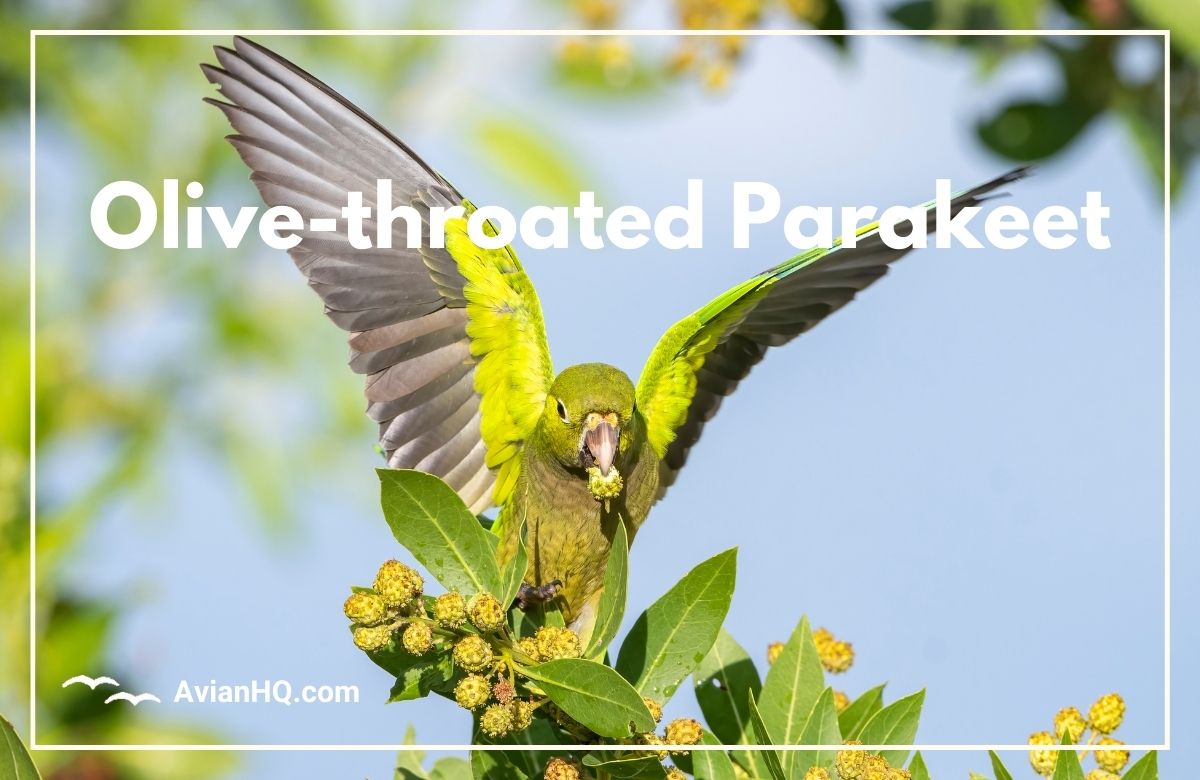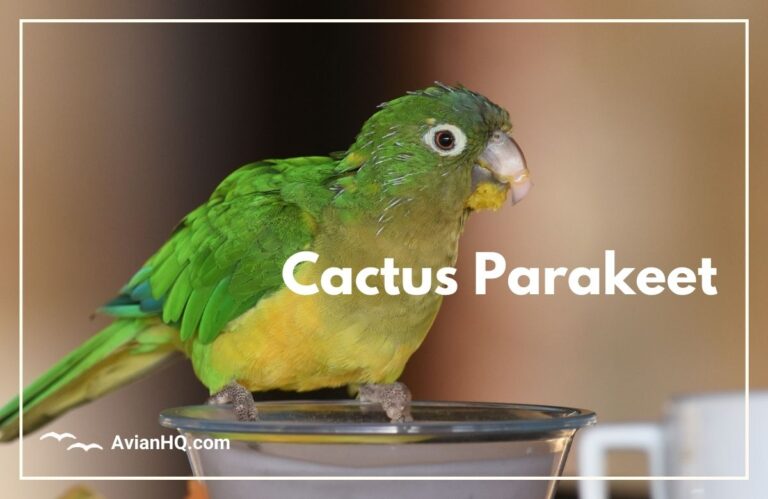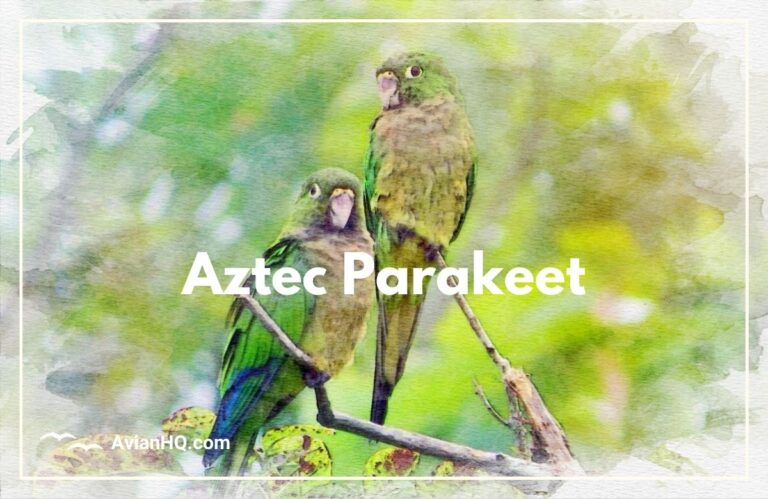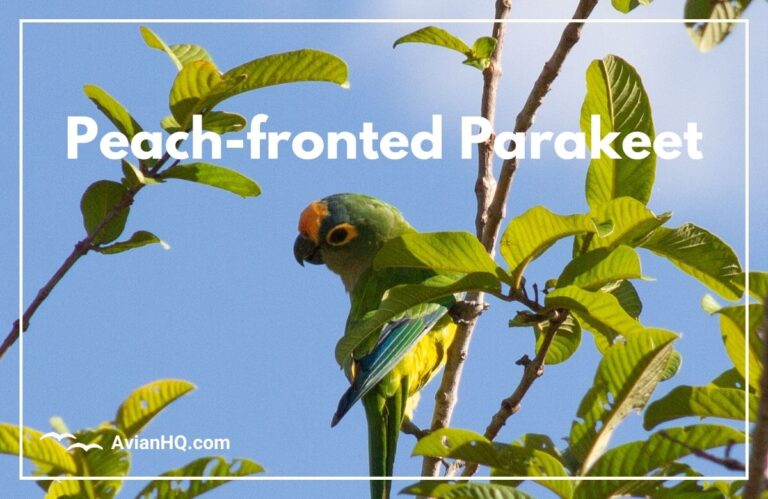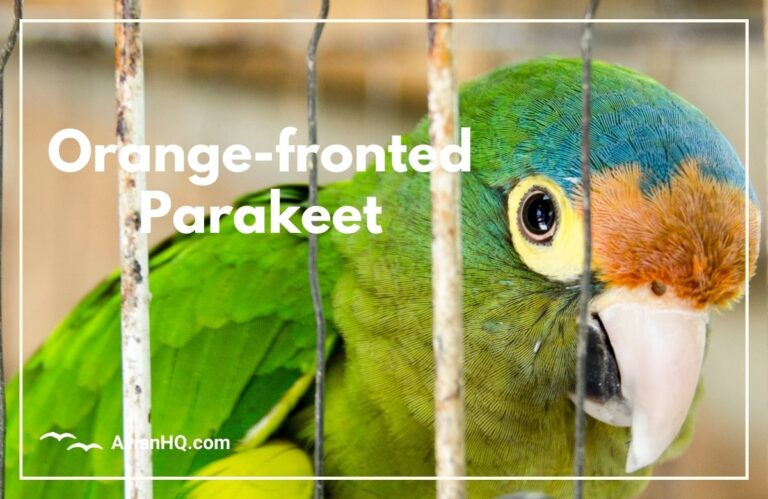Olive-throated Parakeet (Eupsittula nana)
Have you ever seen a small, swift parakeet darting through trees or across the sky, its green wings flashing brightly in the sunlight? If you spend time outdoors in parts of Mexico or Central America, you might spot the Olive-throated Parakeet (Eupsittula nana). This colorful little bird measures just 6 to 7 inches (15 to 18 centimeters) in length, but don’t let its small size fool you – it possesses remarkable speed and agility in flight.
Known for its distinctly olive-brown throat patch and vibrant body plumage, the Olive-throated Parakeet is a familiar sight in its native habitats. These areas range along coastal regions from Mexico south to northwestern Costa Rica. The Olive-throated Parakeet resides mainly in dry forests and woodlands up to around 6,500 feet (2,000 meters) elevation. It thrives equally well in native wilderness as in parks, gardens, and agricultural areas influenced by humans.
Social and energetic, Olive-throated Parakeets gather in lively, squawking flocks numbering 10 birds or more. They spend their days actively foraging for fruit, seeds, and other nutritious plant foods. At night, communal roosting sites in holes or crevices high on tree trunks offer shelter and safety. Between their conspicuous chatter and behavior, Olive-throated Parakeets are hard to miss!
So if you’re exploring the lush, vibrant landscapes of Mexico or Central America, listen and look among the trees to spot the Olive-throated Parakeet. We’ll cover more on identifying these charming little parrots and appreciating their behaviors and ecology in the sections ahead. Let’s start by examining a bit of history behind classifying this species and how experts currently categorize it.
History and Taxonomy
The scientific community first described the Olive-throated Parakeet back in 1854, categorizing it as a new member of the Conurus genus dubbed Conurus nana. Over a century later in 1977, the species was reclassified into the genus Aratinga as Aratinga nana. Most recently, a 2012 study on parakeet genetics suggested a revised taxonomy, placing this species within a new genus Eupsittula. Today the Olive-throated Parakeet’s full scientific name is officially designated as Eupsittula nana.
This small tropical American parakeet resides in the same broad region as a diversity of other Eupsittula parakeets. Some of its closer cousins in terms of evolutionary lineage include:
- The Pacific Parakeet (Eupsittula canicularis) found along the southwestern Mexico coast
- The Brown-throated Parakeet (Eupsittula pertinax) occurring in eastern and southern Mexico forests as well as Central America
- The Olive-headed Parakeet (Eupsittula aglaiae) native to Panama’s central lowlands
So while the Olive-throated Parakeet possesses its own distinct plumage and behaviors, it shares a heritage with numerous other lively, resourceful Eupsittula parrots adapted to New World ecosystems.
Physical Appearance
The Olive-throated Parakeet is a petite, elegant bird, measuring about 6 to 7 inches (15 to 18 centimeters) from the tip of its tail to the end of its beak. It weighs an average of 1.5 to 2 ounces (40 to 55 grams).
True to its common name, the Olive-throated Parakeet sports a distinctive olive-brown patch across its throat, contrasting sharply with the main bright green and blue-tinged body plumage. Its back and wings show a vibrant green coloration, while the lower breast and belly area leans more blue-green in tone. The most striking flash of color appears on the parakeet’s undertail, which reveals vibrant blue coverts when seen from below.
Adding accents to the plumage, the Olive-throated Parakeet has a bright red beak, grayish legs and feet, and keen, dark brown irises in its eyes. Its long tail tapers to a point and acts as an adept steering mechanism in flight.
While sexes appear almost identical to casual observers, female Olive-throated Parakeets typically have less blue edging on their wing feathers versus males. Juveniles also showcase subtle physical differences, with a lighter eye color and shorter tail length compared to mature adults.
Habitat and Distribution
The Olive-throated Parakeet inhabits home ranges along the Pacific Coast of Mexico and Central America. Its distribution extends from central and southern Mexico through Guatemala, El Salvador, Nicaragua, and northwestern Costa Rica.
Within this territory, Olive-throated Parakeets primarily occupy dry forests and woodlands. They thrive at low to middle elevations up to approximately 6,500 feet (2,000 meters). Typically they avoid higher altitude zones characterized by dense, wet cloud forests.
Due to habitat loss, some populations now reside mainly fragmented forest patches on foothills or plateaus rather than lower elevation areas. Olive-throated Parakeets also show adaptability to human-altered environments like agricultural areas, parks, and urban gardens.
Roosting and nesting sites are located on tree trunks and branches within the canopy. Preferred tree species seem to include figs, ceibas, Poró trees, and heliconias. The parakeet’s movement and range depend largely on localized food supplies as they track fruit ripening patterns over the course of a year.
Diet and Feeding
The Olive-throated Parakeet is primarily herbivorous, feeding on a mix of seeds, fruits, berries, buds, and other plant-based foods. Their diverse diet includes mulberries, figs, mangos, papayas, palm fruits, maize, oats, and more.
They forage actively in small but noisy flocks, able to cover long distances of up to 18 miles (29 kilometers) in a day searching for nourishment. Their strong beaks allow them to extract seeds efficiently. They employ their feet to grasp and manipulate food items as well.
Olive-throated Parakeets may occasionally sample insects, grubs, or even small snails for extra protein. In agricultural areas, some birds adapt to exploit mango crops, corn fields, and fruiting trees associated with human cultivation. This sometimes creates conflict when significant quantities get damaged.
Feeding activity revolves around dawn and dusk peaks, with the parakeets setting forth at sunrise to search for food. They return to home roosts in late afternoon to digest meals and rest overnight. By understanding more about their dietary patterns and needs, conservationists gain insight on how to best protect viable habitats.
Breeding and Reproduction
Olive-throated Parakeets reach sexual maturity and begin breeding efforts around 2-3 years of age. They form monogamous breeding pairs that collaboratively nest and raise young.
The breeding season falls between February and June, coinciding with conditions of increased food availability. Both sexes scout for suitable nesting sites, often choosing existing cavities on tree trunks and branches located high above ground.
Females typically lay clutches of 3-4 small white eggs within these protected nest holes. She incubates the eggs alone for 23-24 days while the male provides food. After all eggs hatch, both parents share duties feeding chicks within the nest.
The altricial hatchlings are bald, helpless, and eyes closed at birth. But they grow quickly thanks to ample feeding by the adult pair. Feathers begin emerging around 3 weeks and by 6-7 weeks, the young are ready to exit the nest. They remain dependent on parental care for another couple weeks to finish fledging.
Soon the juveniles master their flying abilities enough to join flocks. Average lifespan in natural conditions can extend up to 15 years for Olive-throated Parakeets. Through each successful breeding cycle, parakeet social groups thrive!
Behavior and Ecology
The Olive-throated Parakeet is a highly social, energetic, and vocal species. They spend most of their active daylight hours foraging and moving around in flocks of 10 to 30+ loud, chattering birds. Their flight skills impress – they move fast between perches with remarkable aerial agility and control.
One main predation threat comes from Falcons that inhabit the same forested regions. But the parakeets utilize social behaviors and vigilance to enhance protection from predators. For example, one or two flock members may act as “sentinels” – elevated on taller branches away from the main feeding activity while keeping watch for dangers. Loud alarm calls signal all to retreat to cover.
Come evening, Olive-throated Parakeets congregate to roost together on vertical branches or in tree cavities, sometimes joining other parrot flocks. Beyond protection, these overnight communal roosts allow for social bonding. Researchers estimate average lifespan around 12 years in the wild.
The species exhibits range movement and regional migration patterns too, likely related to tracking fruit ripening seasons as they breed and forage. Their high activity levels and intelligence also promote regular exploration for new food patches and suitable nesting resources.
Overall the Olive-throated Parakeet remains plentiful over most of its native habitat domain. But threats exist with deforestation that reduce available food, shelter, and nesting sites. Maintaining adequate preserves helps provide ecosystem balance enabling this charming, vocal flocking bird to flourish.
Conservation Status
The Olive-throated Parakeet has an extensive range and large overall population size. As a result, the species has a conservation designation of Least Concern according to the International Union for Conservation of Nature (IUCN) Red List assessments.
However, experts note that populations have declined in recent decades primarily due to threats from habitat loss and degradation across parts of its home region. Rates of decline seem to vary significantly across its occupied territory.
For example, the species remains abundant and visible within protected areas like Mexico’s Biosphere reserves along its Pacific coast. But it has become extremely rare in El Salvador where only tiny remnant groups still persist in forest fragments. Most declines correlate with high rates of deforestation driven by factors like land conversion for agriculture or logging.
While still adaptable and not at immediate risk, active conservation efforts are recommended to preserve sufficient protected dry forest habitat for viable Olive-throated Parakeet populations going forward. Loss of the tree species this species relies on for food and nesting would also negatively impact its status over time. Tracking trends and implementing support strategies now can prevent major issues down the line.
Cultural Significance
The vibrant colors, loud vocalizations, and high activity levels of Olive-throated Parakeets ensure people take note of these birds! In community parks, gardens, and agricultural areas, Olive-throated Parakeets mingle freely around humans across sections of their range. Some individuals even learn to mimic basic words and sounds adding to their charm.
The species appears in Native American myths and artwork within communities overlapping its habitat domain. Legends feature the Olive-throated Parakeet as a symbol of positive spiritual messages or social values. Bright feathers and symbolic imagery integrate into indigenous headdresses, jewelry, pottery, paintings, and more.
Today bird-watching tourists who explore regions like Mexico’s Pacific coast deliberately seek sightings of the Olive-throated Parakeet mingling energetically in tree canopies and across blue skies. The parakeet’s showy behaviors and stunning plumage never fail to impress those lucky enough to catch these wild spectacle up close! Careful habitat conservation promises future generations and communities can continue benefiting from experiences with this incredible little parrot.
Conclusion
The Olive-throated Parakeet proves you don’t need large size to make a significant visual and acoustic impact! Measuring just 6-7 inches in length, this tropical American parrot packs vibrant, multi-hued plumage and boisterous, energetic behaviors into its small body.
Found in Pacific coastal regions from Mexico to northwestern Costa Rica, the Olive-throated Parakeet inhabits dry forests and woodlands predominantly at elevations under 6,500 feet. It feeds on a diverse array of fruit and seeds while foraging in extremely social, noisy flocks during daytime hours. At night, communal roosting sites allow the parakeets to rest and bond safely high up on tree branches and in cavities.
While still classified as Least Concern, habitat loss has led significant population declines regionally for the Olive-throated Parakeet. Protecting sufficient preserves helps provide ecosystem viability enabling this charming, vocal flocking bird to flourish into the future.
So next time you’re exploring tropical forests of Mexico or Central America, keep watch for a burst of green and red accompanied by loud squawks! If you catch sight of the Olive-throated Parakeet dazzling the skies with its speed and agility, consider yourself privileged to witness this incredible species up close. From physical traits to behaviors and conservation matters, we’ve covered key facets behind appreciating this eye-catching tropical parrot.

